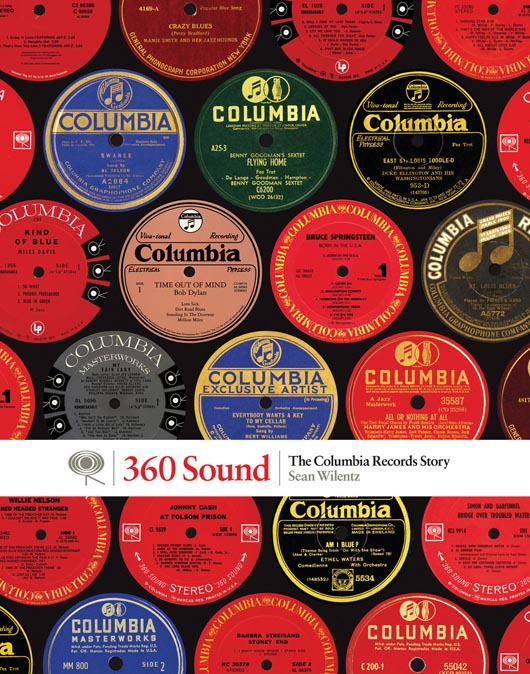Sean Wilentz is hardly your Quaaludes and vitriol music critic. That may be why the Bob Dylan in America author was commissioned to write the definitive history of one of America’s truly great record companies. Mr. Wilentz is also the Pulitzer Prize-nominated author of The Rise of American Democracy: Jefferson to Lincoln.
The George Henry Davis 1886 Professor of American history at Princeton University brings his analytic mind and sense of cultural evolution to the history of America’s oldest record company in 360 Sound: The Columbia Records Story.
The book is oversized, with heavy coated stock pages and rare pictures of the company’s founders, blues pioneers, crooners, as well as unguarded mo ments with Sinatra, Streisand, Springsteen and Paul Simon. As a project for vanity, the gatekeepers needed to dig no further. But Mr. Wilentz, who will appear at the Martha’s Vineyard Book Festival this weekend, is not one to skim the surface. Starting with Thomas Edison’s invention of the gramophone and examining the technology behind early sound recording and playing, he considers the impact on culture, as well as the blackface minstrels, marching bands, classical and popular music of the day.
There is obviously too much to fit in, but somehow Mr. Wilentz offers a survey course that lives up to its 360 title. Using lyrics, advertisements and sheet music, he weaves a patchwork that moves from the jazz age of Louis Armstrong, Bessie Smith and Bing Crosby to the hillbilly sound of Roy Acuff, Gene Autry, Patsy Montana and Bob Wills, to the sophistication of Billie Holiday and Count Basie.
It’s an almost archeological dig, divided into layers and schools. The Jazz Age and Great Depression give way to The War Years, followed by the Golden Years of Mid-Century, Music Revolutions, Energy and Excess, Prestige and Pop and finally, appropriately, Turbulence and Opportunity in the Digital Age.
What seems like ancient history evolves into Miles Davis, Bob Dylan, Johnny Cash. Suddenly Sinatra isn’t a bridge to back when, but the foundation for much of what American music became — which was miles from Mitch Miller’s sing-a-longs.
For Columbia, easily the dominant label of the more sophisticated, the tear in the cultural fabric came with the youth revolution. John Hammond, the storied A&R man, helped make the move from Andy Williams to the future. If the boat had been missed with rock and roll, Columbia quickly caught up, signing the Byrds, Janis Joplin/Big Brother & The Holding Company and Leonard Cohen.
There is so much more to music than Grammy Awards and chart positions. Mr. Wilentz, who’s written about those things in the course of the book, seeks and finds the larger contexts — how our society changed, the way the music reflected and contained those changes, and what it says about us.
What Mr. Wilentz writes about is really the story of all of our lives. Punk, prog, funk, jazz, rock and pop music, Columbia was there — and Elvis Costello, Aerosmith, Herbie Hancock, Pink Floyd, the Clash, Willie Nelson, James Taylor and Earth, Wind & Fire were part of it.
Always a place for the successful bloat of pomp and pop — Neil Diamond, Journey, Julio Iglesias — this is the company that would hit paydirt with Mariah Carey, Destiny’s Child and later Beyonce, as well as Public Enemy’s groundbreaking socio-polical rap. Mr. Wilentz understands these connections, writes about them in the book, and speaks about them in a compelling and insightful way by merging his lens as a historian, a political analyst and the son of Greenwich Village’s Eighth Street Bookshop owner who was present during the days of Dylan and Allen Ginsberg.
To understand the connections, to find the business beneath the music and the way culture both drives and is driven, that’s what the author does. Mr. Wilentz will discuss these issues on the Vineyard, and perhaps shed light on how the behemoth home of Adele will find a future in an uncertain landscape.
Sean Wilentz will speak at 2:20 p.m. on Saturday, August 3, at the Harbor View Hotel and at noon on Sunday, August 4, on the grounds of the Chilmark Community Center.








Comments
Comment policy »